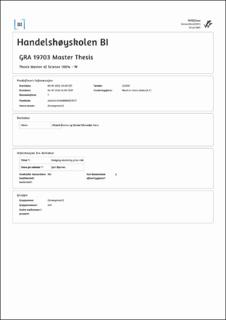Hedging electricity price risk
Master thesis
Permanent lenke
https://hdl.handle.net/11250/3095239Utgivelsesdato
2023Metadata
Vis full innførselSamlinger
- Master of Science [1621]
Sammendrag
In this thesis we analyze how effective it is to hedge electricity spot prices with futures. Using data from 2004 to the end of 2022 with the Nord Pool system price as spot and the monthly and quarterly futures from Nasdaq as the hedging tool in our main analysis, we try five different hedging strategies: Naïve, OLS minimum variance, OLS minimum variance with basis, Rolling OLS minimum variance and GARCH. The hedging effectiveness is defined as the variance reduction compared to an unhedged spot position. We apply two definitions of the spot returns; (case A) the difference between the daily prices on the last day of each period, and (case B) the difference in average prices of each period.
Evaluating the hedging performance of monthly futures traded daily, weekly and monthly, as well as quarterly futures traded monthly and quarterly, we find the best results for monthly futures traded monthly where the results are statistically significantly better than zero in 8 out of total 10 scenarios (5 strategies x 2 cases). In case A we find that the hedging effectiveness is between 49% and 58% out-of-sample, and in case B between -23% and 21%.
On the other hand, the hedging effectiveness varies greatly from year to year, and when we apply the same methodology to UK and Germany from 2014 to 2022, we find significantly lower hedging performance in these markets. Overall, we find it questionable whether futures with the strategies analyzed in this thesis are economically effective tools to hedge electricity market spot exposure.
Beskrivelse
Masteroppgave(MSc) in Master of Science in Business, Finance - Handelshøyskolen BI, 2023
